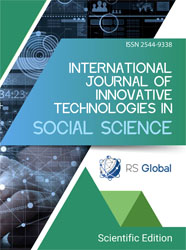A COMPARATIVE STUDY RESULTS ON IN-PERSON AND ONLINE SESSIONS OF FALL SEMESTER OF 2020-2021
Abstract
It is inevitable that digital transformation and technological advancement in ICT sector brings drastic changes into every aspect of our lives, and it has become top priorities of the countries around the world for the successful utilization into the mode of learning and teaching within the education sector. Though the fall semester of our university started off with regular regulations, all the education services were shut down due to the local transmission of COVID-19 pandemic in Mongolia. To continue the education services to the students during the strict lockdown, the usage of online training approaches through TV, radio and other means of technology were required to be introduced.
The purpose of this comparative study is to conduct detailed analysis on the benefits and downsides of both online and in-person training approaches with its impact, and to highlight the key follow-ups for further improvement.
References
Роберт А. Рейзэр, Джон В.Демпсей
Сургалтын загварчлал болон техssнологийн хандлага, асуудлууд. Улаанбаатар 2014, - 530х
Пүрэдорж Ч., Багшлахуйн менежмент. Улаанбаатар 2013, - 486x
Берт Криймерс, Леонидас Кириакайдс Багшлахуйн чанарыг сайжруулахад багшийн хөгжил. 2013, - 266x
Google forms, google drive
Socrative.com вэб сайт
Аж үйлдвэрийн IV хувьсгал. 2021, -15х, pdf (https://www.humanities.mn/)
Jenkins, T. (2002). On the difficulty of learning to program. In Proceedings of the 3rd Annual Conference of the LTSN Centre for Information and Computer Sciences, (vol. 4, No. 2002, pp, pp. 53–58).
Oliveira, A., Behnagh, R. F., Ni, L., Mohsinah, A. A., Burgess, K. J., & Guo, L. (2019). Emerging technologies as pedagogical tools for teaching and learning science: A literature review. Human Behavior and Emerging Technologies, 1(2), 149–160.
https://files.eric.ed.gov/fulltext/EJ842732.pdf
Views:
295
Downloads:
202
Copyright (c) 2022 Damchaasuren. Kh., Oyunjargal. Ch., Otgonbayr. Ts.

This work is licensed under a Creative Commons Attribution 4.0 International License.
All articles are published in open-access and licensed under a Creative Commons Attribution 4.0 International License (CC BY 4.0). Hence, authors retain copyright to the content of the articles.
CC BY 4.0 License allows content to be copied, adapted, displayed, distributed, re-published or otherwise re-used for any purpose including for adaptation and commercial use provided the content is attributed.















